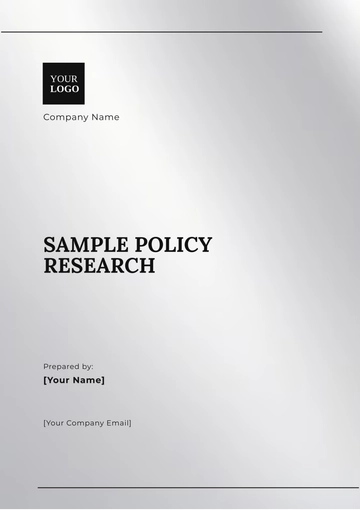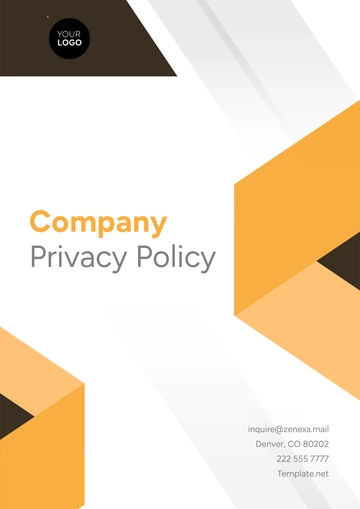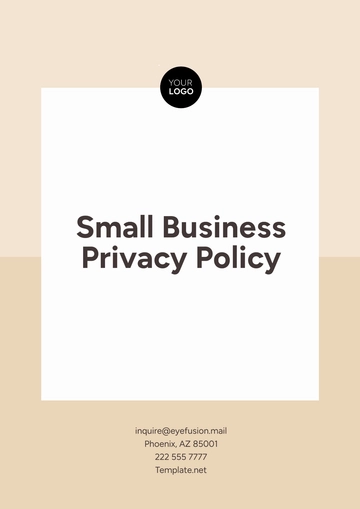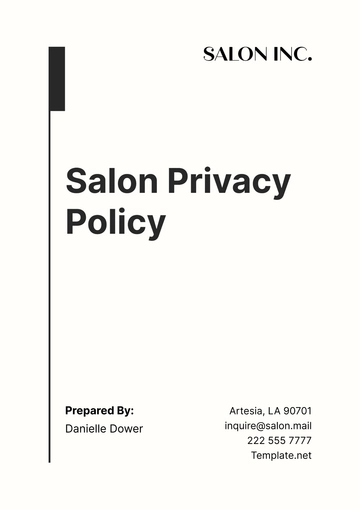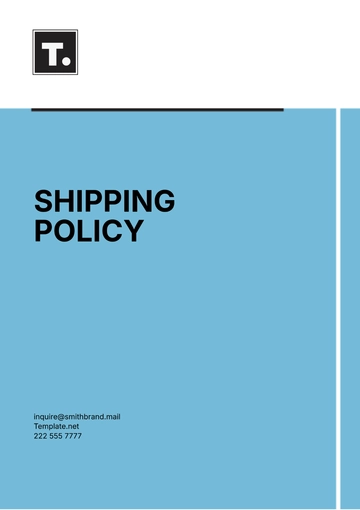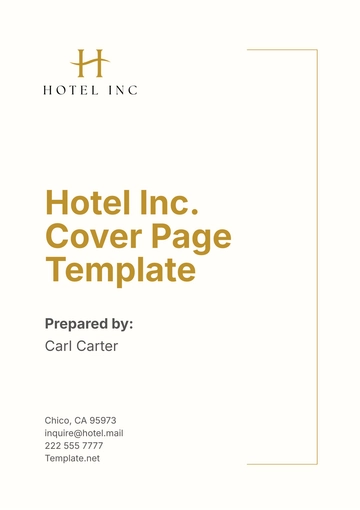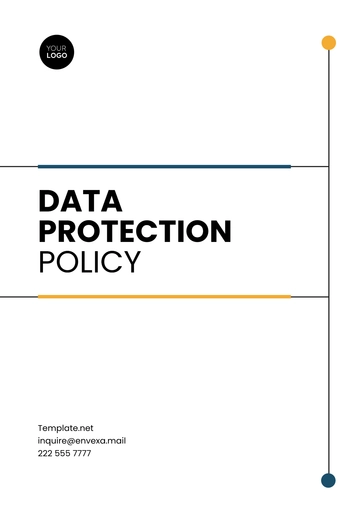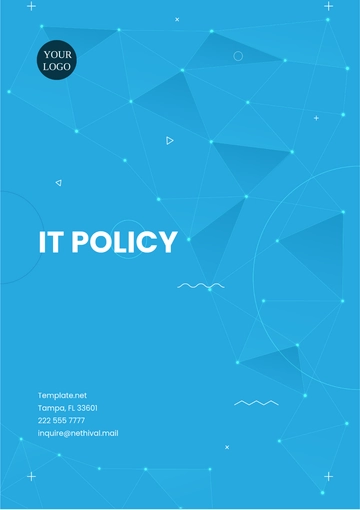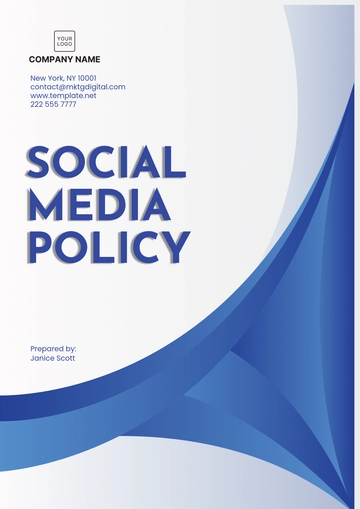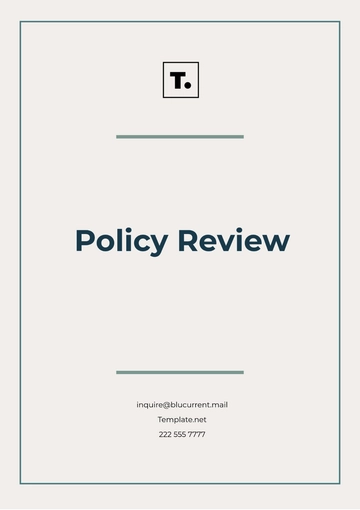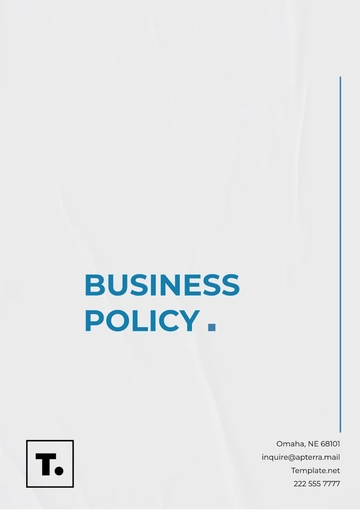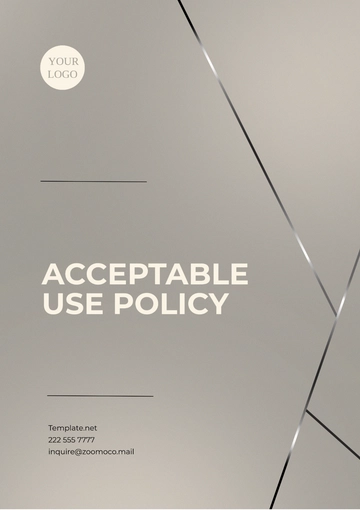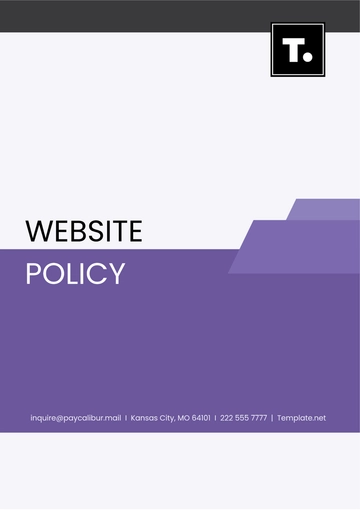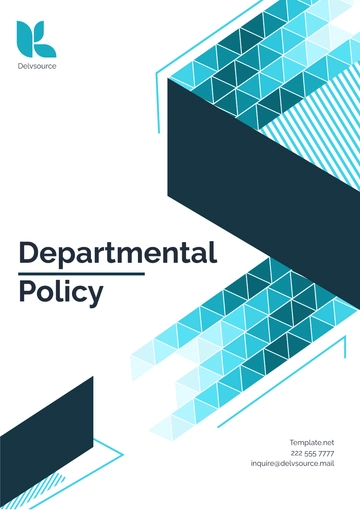Free Marketing Policy & Procedure
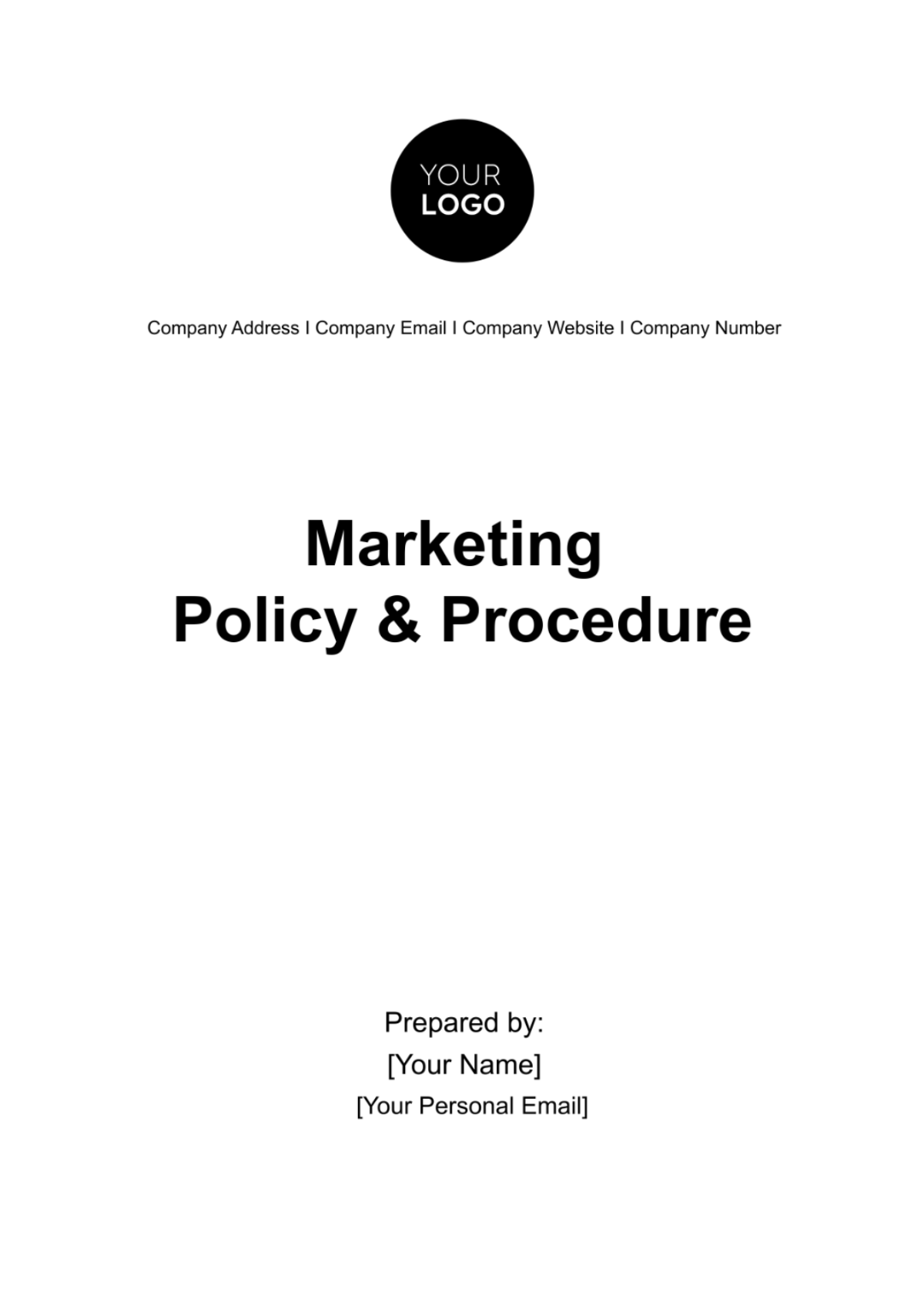
Introduction
A. Overview
The introduction serves as the gateway to the Marketing Policy & Procedure document. It provides a snapshot of what the document entails, setting the stage for the detailed information that follows. This document serves as a comprehensive guide for all marketing activities within [Your Company Name]. It aims to standardize practices, ensuring that all departments are aligned in their marketing efforts.
B. Importance
Adherence to this policy is crucial for maintaining the integrity and reputation of [Your Company Name]. It ensures that all marketing activities are conducted in a legal and ethical manner. Non-compliance could lead to legal issues and damage to the company's reputation.
C. Audience
This document is intended for all employees, contractors, and third-party vendors involved in marketing activities for [Your Company Name]. This includes but is not limited to the Marketing, Sales, and Product Development departments.
Purpose
A. Objective
The primary objective of this policy is to provide a framework that ensures effective and efficient marketing activities across all departments. It aims to guide the planning, execution, and evaluation of marketing strategies to achieve business goals.
B. Goals
The goals of this policy include:
Enhancing brand recognition: To make [Your Company Name] a known name in the industry.
Increasing customer engagement: To foster a relationship with customers through various marketing channels.
Achieving a high return on investment (ROI): To ensure that marketing activities contribute positively to the bottom line.
C. Benefits
Adhering to this policy will result in several benefits:
Consistency: A unified brand message across all marketing channels.
Compliance: Ensures that all marketing activities meet legal requirements.
Efficiency: Streamlined procedures for quicker decision-making and execution.
D. Key Performance Indicators (KPIs)
The effectiveness of this policy will be measured using KPIs such as:
Customer Engagement Rates
ROI
Brand Awareness Metrics
Scope
A. Inclusion
This policy covers all forms of marketing, including but not limited to:
Digital Marketing: Includes SEO, PPC, email marketing, etc.
Print Marketing: Includes brochures, flyers, and other printed materials.
Social Media Marketing: Includes activities on platforms like Facebook, Twitter, and LinkedIn.
B. Exclusion
This policy does not cover the following:
Public Relations Activities: Such as press releases or media interactions.
Customer Service Communications: Such as customer support or after-sales service.
C. Limitations
While this policy aims to be comprehensive, it may not cover all possible scenarios. In such cases, employees are encouraged to consult the Marketing Manager for guidance.
D. Amendments
The policy may be amended to include new marketing channels or strategies, subject to approval from the Marketing Manager and other relevant departments.
Definitions
A. Key Terms
Branding: The marketing practice of creating a name, symbol, or design that identifies and differentiates a product or service.
Content Marketing: A strategic marketing approach focused on creating and distributing valuable, relevant content to attract a clearly defined audience.
ROI: Return on Investment, a performance measure used to evaluate the efficiency of an investment.
B. Acronyms
SEO: Search Engine Optimization
PPC: Pay-Per-Click
KPI: Key Performance Indicator
Policies
A. Branding
1. Logo Usage: The [Your Company Logo] must be used in all marketing materials. Any deviation from the standard logo requires approval from the Marketing Manager.
2. Color Scheme: The company's official color scheme must be adhered to. The colors are defined in the [Your Company Name] Branding Manual.
B. Advertising
1. Advertising Channels: The following table outlines the approved advertising channels and their respective budgets.
Channel | Budget Allocation (%) |
TV | 30 |
Online | 50 |
20 |
2. Legal Compliance: All advertising materials must be reviewed by the legal department to ensure compliance with laws and regulations.
C. Social Media
1. Social Media Platforms: The company is active on the following social media platforms: Facebook, Twitter, LinkedIn. All posts must be consistent with the brand voice and approved by the Social Media Manager.
2. Engagement Metrics: Key performance indicators for social media include likes, shares, and follower count.
D. Content Marketing
1. Content Types: The primary types of content to be produced include blog posts, whitepapers, and videos.
2. Content Calendar: A content calendar must be maintained and followed to ensure regular content output.
Procedures
A. Marketing Campaign Approval
1. Approval Flowchart: To illustrate the approval process for marketing campaigns, let's create a flowchart.
B. Social Media Posting
1. Posting Schedule: Posts should be made at the following times for maximum engagement:
Facebook: 1 PM - 3 PM
Twitter: 12 PM - 1 PM
LinkedIn: 9 AM - 10 AM
2. Content Approval: All social media content must be approved by the Social Media Manager before posting.
C. Budget Allocation
1. Budget Allocation Chart: Here is a visual representation of the budget allocation for different advertising channels.
Compliance and Monitoring
A. Compliance Checks
1. Regular Audits: Regular audits will be conducted to ensure compliance with this policy. These audits will be scheduled quarterly and will be carried out by a designated compliance officer or team.
2. Reporting Deviations: Any deviations from the policy must be reported to the Marketing Manager immediately. Failure to report can result in disciplinary action, including termination.
3. Corrective Actions: Upon identification of non-compliance, corrective actions will be taken. This may include retraining, revision of marketing materials, or, in extreme cases, legal action.
B. Monitoring Tools
1. Google Analytics: Google Analytics will be used to monitor website traffic and user engagement. This tool helps in understanding the effectiveness of various marketing campaigns.
2. HubSpot: HubSpot will be used for tracking customer interactions and measuring the performance of email marketing campaigns.
3. Social Media Analytics: Each social media platform has its own set of analytics tools that will be used to measure key performance indicators like engagement rates, likes, shares, and follower counts.
C. Compliance Training
1. Initial Training: All new hires in the Marketing Department will undergo a compliance training program to familiarize them with this policy.
2. Ongoing Training: Refresher courses will be conducted annually to ensure that all employees are up-to-date with any changes to the policy.
D. Documentation
1. Record-Keeping: All marketing activities must be documented for auditing purposes. This includes campaign plans, approval emails, and performance reports.
2. Data Storage: All compliance-related documents will be stored securely in a centralized database accessible only to authorized personnel.
E. Review and Update
1. Annual Review: This policy will be reviewed annually to ensure its effectiveness and relevance. Any changes will be communicated to all relevant parties.
2. Policy Updates: Updates to the policy will be disseminated through company-wide emails and will be discussed in department meetings to ensure everyone is aware of the changes.
Revision History
A. Update Frequency: This document will be reviewed annually or as needed based on changes in marketing strategies or regulations.
B. Document Versioning: Each revision will be documented with a version number, date, and summary of changes.
Appendices
A. [Your Company Name] Branding Manual: This manual contains detailed guidelines on the use of company logos, color schemes, and other branding elements.
B. [Your Company Name] Social Media Policy: This policy outlines the do's and don'ts of social media usage for [Your Company Name].
- 100% Customizable, free editor
- Access 1 Million+ Templates, photo’s & graphics
- Download or share as a template
- Click and replace photos, graphics, text, backgrounds
- Resize, crop, AI write & more
- Access advanced editor
Develop comprehensive marketing policies and procedures with our Marketing Policy & Procedure Template. This template provides a structured framework for creating guidelines and protocols that govern marketing activities within your organization. It's an essential resource for marketing professionals and teams looking to ensure consistency, compliance, and best practices in their marketing efforts. Secure your copy today and establish a robust set of marketing policies and procedures.
You may also like
- HR Policy
- Restaurant Policy
- Company Policy
- Accounting Policies and Procedures
- Website Policy
- Privacy Policy
- Safety Policy
- School Policy
- IT and Software Policy
- Law Firm Policy
- Construction Policy
- Interior Design Policy
- Travel Agency Policy
- Education Academic Policy
- Security Policy
- Real Estate Policy
- Expense Policy
- Software Policy
